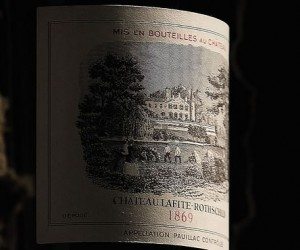 A recent piece of wine tasting research by Richard Wiseman, a psychologist at the University of Hertfordshire in England, has produced irrelevant conclusions that can be attributed to flawed experiment design. Unfortunately with wine consumption’s increasing popularity, both The Guardian and CNET covered the blind tasting test held at the Edinburgh International Science Festival, designed by Wiseman, to determine whether tasters could differentiate between expensive and inexpensive wines. While the irrelevant conclusions are findings produced by an uncontrolled experiment, there appears to be one confirming result that totally escaped the sensational CNET and Guardian reporting.
A recent piece of wine tasting research by Richard Wiseman, a psychologist at the University of Hertfordshire in England, has produced irrelevant conclusions that can be attributed to flawed experiment design. Unfortunately with wine consumption’s increasing popularity, both The Guardian and CNET covered the blind tasting test held at the Edinburgh International Science Festival, designed by Wiseman, to determine whether tasters could differentiate between expensive and inexpensive wines. While the irrelevant conclusions are findings produced by an uncontrolled experiment, there appears to be one confirming result that totally escaped the sensational CNET and Guardian reporting.
The Guardian outlined the experiment and its findings:
In the blind taste test, 578 people commented on a variety of red and white wines ranging from a £3.49 bottle of Claret to a £29.99 bottle of champagne. The researchers categorized inexpensive wines as costing £5 and less, while expensive bottles were £10 and more.
The study found that people correctly distinguished between cheap and expensive white wines only 53% of the time, and only 47% of the time for red wines. The overall result suggests a 50:50 chance of identifying a wine as expensive or cheap based on taste alone – the same odds as flipping a coin.
There is no mention at all about the quality of the wines served. For those of us that spend our lives tasting through wines to determine which expensive wines offer quality that supports higher price points, and which inexpensive wines reach quality levels that qualify them as bargain wines drinking better than many others at 3-4X the price, this experiment is a farce. We know that price is an unsteady indicator of rewarding drinking. Sadly, the articles and posts touting wine drinkers as having little idea whether they are drinking expensive or inexpensive wines were distributed, tweeted, and shared widely producing a really misguided wave of wine content. Judging wine primarily on price is almost as ridiculous as determining quality based on label design. The study erroneously attempts to make informed preferences of the wine aware crowd appear silly and unfounded.
An interesting fact did manage to surface in the CNET coverage, but without color or context.
The wine that fooled most people was, indeed, the claret, with only 39 percent of people being able to tell the difference between wine priced around $23 and one that must have been sold out of a bucket for just over $5.
 Great Bordeaux are often the most subtly elegant wines. The finest qualities of Bordeaux are often indiscernable to less experienced tasters. In so many Bordeaux tastings I have participated in, even experienced tasters often overlook or miss the subtle beauty and nuances of great wine and favor more fruit forward or showy wines. I suspect that claret would be the category to create the most problem for those tasters and, possibly, this is the most supportable outcome of the test.
Great Bordeaux are often the most subtly elegant wines. The finest qualities of Bordeaux are often indiscernable to less experienced tasters. In so many Bordeaux tastings I have participated in, even experienced tasters often overlook or miss the subtle beauty and nuances of great wine and favor more fruit forward or showy wines. I suspect that claret would be the category to create the most problem for those tasters and, possibly, this is the most supportable outcome of the test.